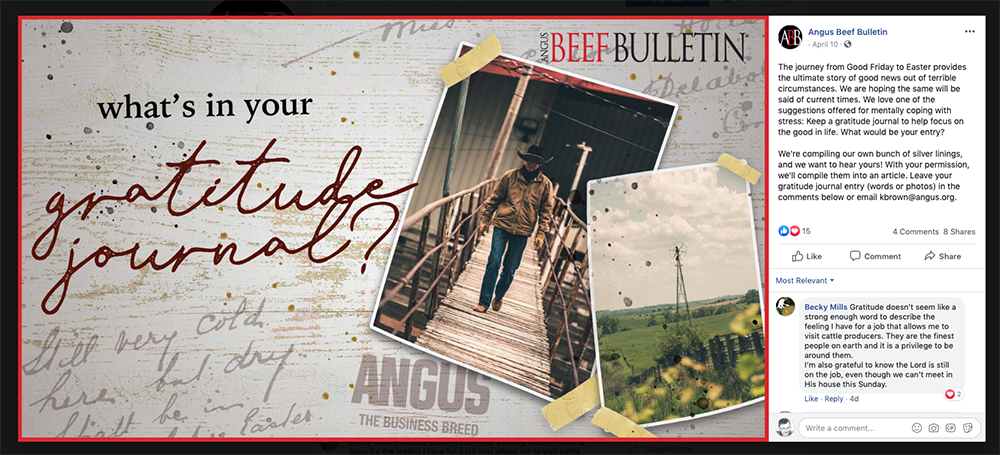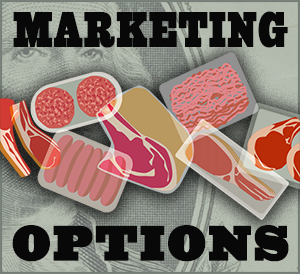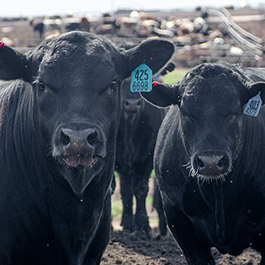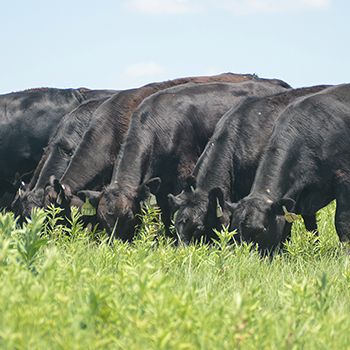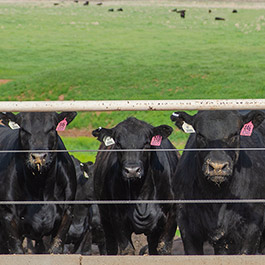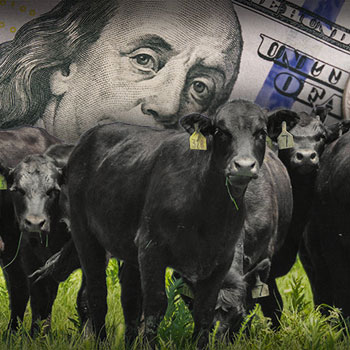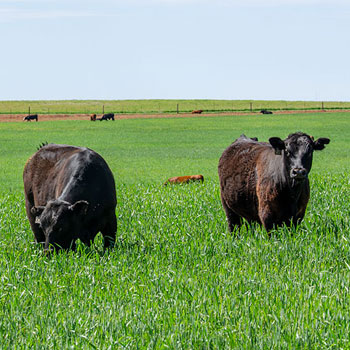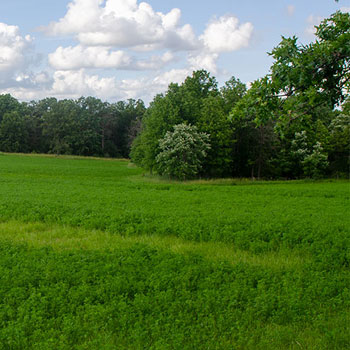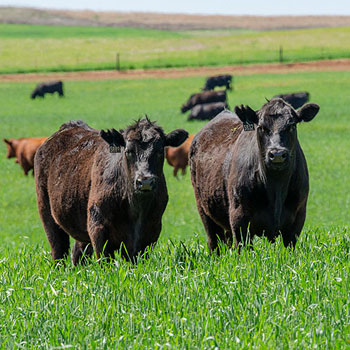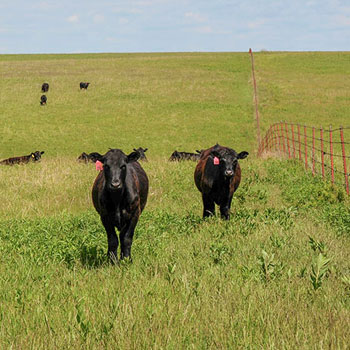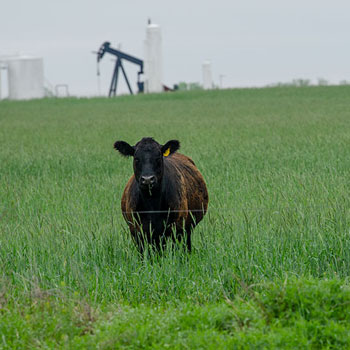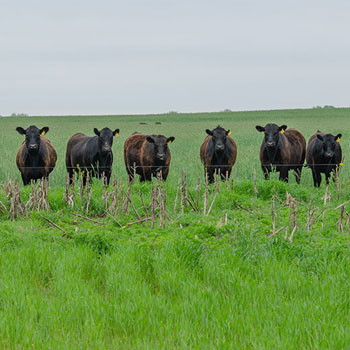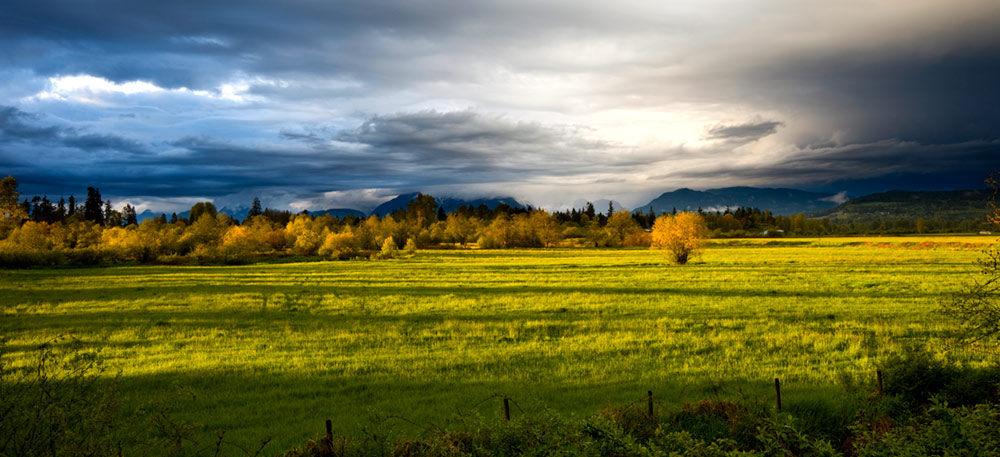
Managing Through a Black Swan
Markets are changing, but with thought, the best can be made of a bad situation.
Nobody can accuse agriculture of being a low-stress endeavor with its changing markets, changing weather and black-swan events. A black swan is an unpredictable event with rare, severe impact. Agriculture has had a few black-swan events in recent years — the Atlas blizzard, the Starbuck wildfire, last year’s intense flooding. Black swans can’t truly be predicted; they can only be prepared for by building robust systems, says LaVell Winsor, a farm analyst with Kansas State University (K-State) Research & Extension.
COVID-19’s effect on increasing market volatility is certainly a black swan. Robin Reid, farm economist with K-State Research & Extension, explains that dairy, cattle and hogs have been hit the hardest due to processing trouble and the switch in demand.
For cattle, Reid says packers are making good margins, but they do have issues in increased costs because of time off for increased cleaning, employee turnover and closings due to disease outbreaks. As a result, cattle slaughter numbers have taken a deep dive, putting strain on feedyards having to hold cattle longer or sell for cheaper prices. This puts a bottleneck on cattle supplies.
Additionally, carcass prices are decreasing because the destination for higher-priced middle meats — normally restaurants — are not open or are open in reduced capacity. Wholesale prices are down because their outlets are gone. Retail demand is up, thankfully, but mostly for the cheapest options, like ground beef.
Other ag segments are similarly affected. Corn has experienced two black-swan events in plummeting commodity prices and less consumption and demand of ethanol. Last August, Reid says the low in the commodity market was about $3.60 per bushel, but now it has dropped to the $3.30 range. About one-third less fuel is being consumed because Americans are not on the road. An oil war between Saudi Arabia and Russia is driving oil prices down to $20 per barrel, further lessening ethanol demand since it is more costly to produce. She warns about one-third of ethanol plants may close, leaving a shortage of dried distillers’ grains (DDGs) for cattle rations.
Along the same lines, soybeans are adversely affected by less demand for biofuels. However, due to circumstances in South America, U.S. soybeans could fare better in export situations. With less available distillers’ grains, there could also be higher demand for soybean meal for livestock rations.
A silver lining could be that input costs could be lower this year for things like fertilizer.
Consumer food demands are changing from wholesale to retail, but shifting production chains to meet that demand is clunky, Reid says. By the time the production and distribution chains could adapt, it would potentially need to switch back to normal.
How to manage
Understanding these changes is one thing, but what can we do about it? Winsor says it’s important to acknowledge this is an incredibly uncomfortable time, and it’s OK to grieve that change. However, despite the uncertainty, she suggests staying the course and following your operation’s production plan. This isn’t to say avoid tweaks and adjustments. Continue to look at the farm financials so you know and can manage the ramifications of the numbers and critical changes.
“Do not bear the weight of these decisions by yourself,” she warns. Keep in touch with your business partners, lenders, brokers and marketing advisors, and ag retailers.
If it feels like your plan has blown up, she recommends looking for something you can control. Take the next step, then the next and the next. Continue with your ordinary tasks to keep some form of normal.
You can control your farm safety plan. Think about your biosecurity practices and practice social distancing. Plan for those who need to enter your farm, like seed delivery, she says. Definitely think through what happens if human illness affects your farm, whether it be you or employees.
You can also review the government stimulus package for anything that might affect your operation. Control costs where you can, and look at refinancing options on loans.
Winsor suggests reviewing your marketing plans. There is opportunity to lock in your wheat prices. Ethanol plants closing may mean it is important to lock in basis levels on corn. DDGs may need to be replaced with soybean meal.
Often, people are paralyzed in making decisions with this much uncertainty, but in Winsor’s experience, those who weather storms the best are the ones who make decisions.
“Accept that some decisions will be wrong in hindsight. Make the best decisions with information that’s available today,” she says.
“These are highly volatile times, but no one is going to stop eating. We are all learning a lot about how the supply chain works and how it maybe didn’t work how we thought it did,” she says.
Rebecca McFarland, family and child development agent with the Frontier Extension District, offers ways to cope with this additional decision-making stress. It is OK not to feel OK with this, she says. She recommends using a gratitude journal, music, laughter, diaphragmatic breathing and social support at safe distances.
It is important to eat healthful foods and drink plenty of water. Engage in hobbies, get enough sleep, be active, and try to reframe negative situations. Reframing is taking a negative perception and substituting it for a positive or neutral one, without denying the situation. Instead of concentrating on things you can’t control, accept them and think about what you can control.
Black-swan events are not predictable, but they are not new. They can be managed with time and effort.
